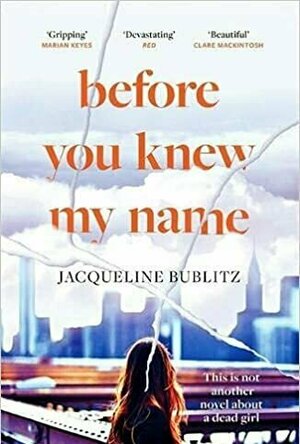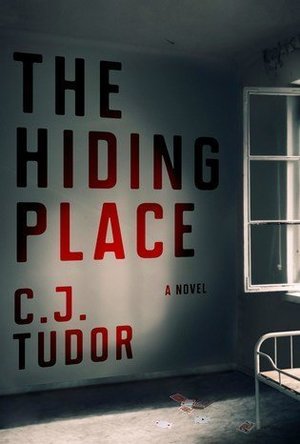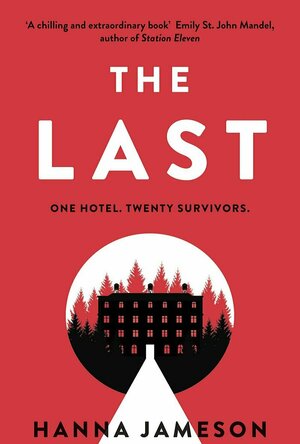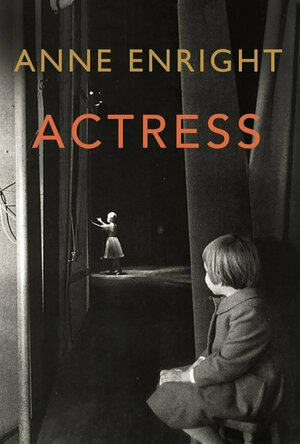Search
Search results
JT (287 KP) rated American Hustle (2013) in Movies
Mar 10, 2020
There’s a lot of love for American Hustle and with a cast such as this it is easy to see why. It’s a film that oozes glitz and glamour and has a slick sense of stability with shades Scorsese as an attempt at a crime caper.
Bale is top draw, an opening shot that requires no dialogue sees Bale’s stomach bloating Irving Rosenfeld carefully craft a balding comb over. Then in walks his partner throughout this initial sting, Richie DiMaso (Bradley Cooper) with a beautiful perm – and this is just the male cast.
The film is loosely based on a true story. Bale’s con man falls for Sydney Prosser (Amy Adams) and the pair look to collude together before being nabbed by the FBI and forced to help bring down a circle of corrupt politicians as a way to avoid prosecution. This is no heist from the Soderbergh play book, but a slow churning plan that involves fake sheikhs and mafia bosses and is the brainchild of agent DiMaso who targets Mayor Carmine Polito (Jeremy Renner) as one of the many poor unfortunates looking to make change in a growing 70s society.
Supporting cast are exceptional, none more so than Jennifer Lawrence, as Rosenfeld’s long suffering wife who during proceedings threatens to blow the whole plan wide open. That’s not to say that Amy Adams isn’t well worth her role, but the wardrobe department must have been short on ideas for her if all that was around were dresses with plunging necklines.
Overall it plays out well but does suffer confusion as you wonder who is playing who during the whole affair. All the way through I felt that something wasn’t quite right with it. For me it didn’t have the lasting impact that The Fighter had or even Silver Linings Playbook, but as a film that wants to capture everything the 70s were about it does a stupendous job.
Bale is top draw, an opening shot that requires no dialogue sees Bale’s stomach bloating Irving Rosenfeld carefully craft a balding comb over. Then in walks his partner throughout this initial sting, Richie DiMaso (Bradley Cooper) with a beautiful perm – and this is just the male cast.
The film is loosely based on a true story. Bale’s con man falls for Sydney Prosser (Amy Adams) and the pair look to collude together before being nabbed by the FBI and forced to help bring down a circle of corrupt politicians as a way to avoid prosecution. This is no heist from the Soderbergh play book, but a slow churning plan that involves fake sheikhs and mafia bosses and is the brainchild of agent DiMaso who targets Mayor Carmine Polito (Jeremy Renner) as one of the many poor unfortunates looking to make change in a growing 70s society.
Supporting cast are exceptional, none more so than Jennifer Lawrence, as Rosenfeld’s long suffering wife who during proceedings threatens to blow the whole plan wide open. That’s not to say that Amy Adams isn’t well worth her role, but the wardrobe department must have been short on ideas for her if all that was around were dresses with plunging necklines.
Overall it plays out well but does suffer confusion as you wonder who is playing who during the whole affair. All the way through I felt that something wasn’t quite right with it. For me it didn’t have the lasting impact that The Fighter had or even Silver Linings Playbook, but as a film that wants to capture everything the 70s were about it does a stupendous job.
Kirk Bage (1775 KP) rated Don't F**k with Cats: Hunting an Internet Killer in TV
Apr 8, 2021
This Emmy award winning 3 parter plays like a long movie when watched back to back, which is exactly what I did back in November. It was the first of a full week of watching nothing but True Crime Docs, as it sparked the idea of looking out for the very best ones out there, several of which have made this list. I have rarely felt more tense or uneasy watching anything, ever. I knew the subject matter wasn’t going to be easy, and the apprehension / genuine fear it gave me going in was palpable. It helped, if that is the right word, that I knew absolutely nothing of what to expect. As the talking heads started piecing together their hunt for a guy with a penchant for animal cruelty, posting videos online that may or may not have been a hoax, I was drawn in to such a degree that at one point I believe I was literally on the edge of my seat.
I swayed from thinking the entire thing might be a mockumentary and everything in it made up, to being so horrified by the creepy voyeuristic element that I almost had to turn it off several times. I found it astonishing to think that all the details of this case were real, and the more we found out about the criminal behind it all, the more it made my skin crawl… the interesting thing being that the minute it was finished I craved more of the same and ended up making a list of what others were saying were the best ones! Even reflecting dispassionately that the interviews given by the gang of internet pet-loving vigilantes that helped crack the case are uneven and highly forced, I can’t help admiring how this was put together. In terms of tension building and shock value it has to be one of the best examples to date of how to keep the audience entirely gripped.
I swayed from thinking the entire thing might be a mockumentary and everything in it made up, to being so horrified by the creepy voyeuristic element that I almost had to turn it off several times. I found it astonishing to think that all the details of this case were real, and the more we found out about the criminal behind it all, the more it made my skin crawl… the interesting thing being that the minute it was finished I craved more of the same and ended up making a list of what others were saying were the best ones! Even reflecting dispassionately that the interviews given by the gang of internet pet-loving vigilantes that helped crack the case are uneven and highly forced, I can’t help admiring how this was put together. In terms of tension building and shock value it has to be one of the best examples to date of how to keep the audience entirely gripped.
Laura Doe (1350 KP) rated Before You Knew My Name in Books
Jul 1, 2021
This book was a delight and a surprise to read! One that I couldn’t wait to finish but at the same time didn’t want to finish as it would mean the end of the story.
We follow Alice, who at 18 has run away to New York, following in her mothers footsteps. We know from the start that Alice has been murdered, but we don’t know why and by who, and we are kept guessing for the majority of the book. We also follow Ruby, who has run away from her life in Australia because of an affair she had with a man that is soon to be married. Both of their stories intertwine, and for a while you can’t tell why… until Alice’s body is found my Ruby on a morning jog. After that, Ruby feels the need to ensure that Alice’s murderer comes to justice and ends up making a few friends along the way.
The story is told by Alice (or her spirit as we come to realise) and is so beautifully written that it doesn’t become confusing switching between the parallels of the two women’s lives. Some of the turn of phrases are so beautiful that I could read Jacqueline Bublitz’s writing forever and not get bored. Her descriptions make you feel like you are experiencing the exact moment or looking at the exact same building and the emotions are described so wonderfully that you feel them too.
It is so rare to find a book that focuses on the victim of a crime instead of the perpetrator, and even in every day life the same is true. This book makes you wonder why we can’t focus on the person outside of being a victim and only focus on the perpetrator when it comes to being brought to justice.
I want to thank Jacqueline Bublitz and Pigeonhole for allowing me to read this book and I look forward to reading Jacqueline’s next book!
We follow Alice, who at 18 has run away to New York, following in her mothers footsteps. We know from the start that Alice has been murdered, but we don’t know why and by who, and we are kept guessing for the majority of the book. We also follow Ruby, who has run away from her life in Australia because of an affair she had with a man that is soon to be married. Both of their stories intertwine, and for a while you can’t tell why… until Alice’s body is found my Ruby on a morning jog. After that, Ruby feels the need to ensure that Alice’s murderer comes to justice and ends up making a few friends along the way.
The story is told by Alice (or her spirit as we come to realise) and is so beautifully written that it doesn’t become confusing switching between the parallels of the two women’s lives. Some of the turn of phrases are so beautiful that I could read Jacqueline Bublitz’s writing forever and not get bored. Her descriptions make you feel like you are experiencing the exact moment or looking at the exact same building and the emotions are described so wonderfully that you feel them too.
It is so rare to find a book that focuses on the victim of a crime instead of the perpetrator, and even in every day life the same is true. This book makes you wonder why we can’t focus on the person outside of being a victim and only focus on the perpetrator when it comes to being brought to justice.
I want to thank Jacqueline Bublitz and Pigeonhole for allowing me to read this book and I look forward to reading Jacqueline’s next book!
BookInspector (124 KP) rated The Hiding Place / The Taking of Annie Thorne in Books
Sep 24, 2020
The protagonist in this book is Joe Thorne, a teacher, who has very serious gambling problems. He comes back to his little hometown because of several reasons, and that is where history starts to repeat itself. I really enjoyed Joe’s character, he is incredibly witty and sarcastic and made me laugh on multiple occasions. I really liked the way the author portrayed the atmosphere of this little town and the people living there. I loved how the characters in this book were developed, and how interesting and intriguing they were.
When I started this book, I thought it is going to be a crime mystery, and was really pleasantly surprised to find it to be a horror story. The narrative travels between present and past, explaining many events which are influencing the present, and I really liked this way of storytelling. The author used a single perspective in this novel, and I think it worked very beautifully. The topics discussed in this book were bullying, gambling, school life and wish to fit in, etc.
I thoroughly enjoyed the writing style of this book, I think all the twists and turns were in the right places, and it was a true page turner for me. The chapters had very decent length and were just flying by for me. I have to throw in a disclaimer, there are some severe and nasty cases of bullying in this book, which might upset some readers. The ending rounded the story very nicely, and I really liked the way the author wrote it.
So, to conclude, it is an incredibly well-written horror story, that is dark, creepy, and gave chills down my spine. It is filled with a great variety of characters and unexpected plot, which held me on the edge of my seat throughout the book. I strongly recommend to read this book, and I hope you will enjoy it as much as I did.
When I started this book, I thought it is going to be a crime mystery, and was really pleasantly surprised to find it to be a horror story. The narrative travels between present and past, explaining many events which are influencing the present, and I really liked this way of storytelling. The author used a single perspective in this novel, and I think it worked very beautifully. The topics discussed in this book were bullying, gambling, school life and wish to fit in, etc.
I thoroughly enjoyed the writing style of this book, I think all the twists and turns were in the right places, and it was a true page turner for me. The chapters had very decent length and were just flying by for me. I have to throw in a disclaimer, there are some severe and nasty cases of bullying in this book, which might upset some readers. The ending rounded the story very nicely, and I really liked the way the author wrote it.
So, to conclude, it is an incredibly well-written horror story, that is dark, creepy, and gave chills down my spine. It is filled with a great variety of characters and unexpected plot, which held me on the edge of my seat throughout the book. I strongly recommend to read this book, and I hope you will enjoy it as much as I did.
What scares you the most? Ghouls, vampires, slime-fanged aliens ...or something terrible that truly could happen? For me it's definitely the latter.
Our narrator, Jon, is a historian witnessing the most monumental event of humanity but at a great distance. He feels compelled to keep a record of the people isolated with him in a vast hotel. He collects their stories and feelings in the faint hope that some sort of civilisation will survive long enough to rediscover them. Through his journal we experience what it would be like to be aware that the world was ending, billions dying, but be totally disconnected from the horrific events.
Most books set during an apocalypse are fraught with traumatic dashes, violent brushes with death, horror and misery. There are elements of that here but this book mostly poses the question of what you would do if there was little drama but lots of time to dwell on things. The people in the hotel are comparatively safe in an old hotel surrounded by forest. They wait for something to happen, for someone to rescue them, or perhaps just for their food to run out. Jon embarks on a quest to solve one cruel murder, taking him down a path of mistrust and near hysteria.
I enjoyed the blend of dystopia and murder mystery; the first half of the book reads like a modern day progeny of George Orwell and Agatha Christie. Asking your audience to imagine bombs wiping out entire countries but then drastically limiting their focus to one death amongst multitudes is startling. I also liked the references to real people and places, there were definite shades of the Cecil Hotel here for a true-crime/horror podcast junkie like me to appreciate. However, I do feel that the novel lost it's way towards the end - trying to be all things to all people perhaps. It's definitely worth reading and I'm keen to see more from this author.
Our narrator, Jon, is a historian witnessing the most monumental event of humanity but at a great distance. He feels compelled to keep a record of the people isolated with him in a vast hotel. He collects their stories and feelings in the faint hope that some sort of civilisation will survive long enough to rediscover them. Through his journal we experience what it would be like to be aware that the world was ending, billions dying, but be totally disconnected from the horrific events.
Most books set during an apocalypse are fraught with traumatic dashes, violent brushes with death, horror and misery. There are elements of that here but this book mostly poses the question of what you would do if there was little drama but lots of time to dwell on things. The people in the hotel are comparatively safe in an old hotel surrounded by forest. They wait for something to happen, for someone to rescue them, or perhaps just for their food to run out. Jon embarks on a quest to solve one cruel murder, taking him down a path of mistrust and near hysteria.
I enjoyed the blend of dystopia and murder mystery; the first half of the book reads like a modern day progeny of George Orwell and Agatha Christie. Asking your audience to imagine bombs wiping out entire countries but then drastically limiting their focus to one death amongst multitudes is startling. I also liked the references to real people and places, there were definite shades of the Cecil Hotel here for a true-crime/horror podcast junkie like me to appreciate. However, I do feel that the novel lost it's way towards the end - trying to be all things to all people perhaps. It's definitely worth reading and I'm keen to see more from this author.
Actress is the story of Katherine O’Dell, told by her daughter. She looks back on her mother’s career as Ireland’s darling, as she works her way up through Ireland’s bus-and-truck circuit, London’s West End , Broadway and finally Hollywood. Norah lives through the more successful period of her mothers life, and then has to deal with her fall from Grace after she commits a thoroughly bizarre crime. I really loved this book, and I had to keep reminding myself that it was in fact fiction. The author, Anne Enright, read her book, and she did it so well. It really sounded like someone who was telling their own life story, as opposed to telling ‘a’ story. It was really immersive and well told. I’m not surprised that it was on the long list for the Women’s Prize 2020.
I loved the way that we watched Katherine’s slide into mental health problems through the eyes of her daughter, juxtaposed with the life that she had lived before - the whole bohemian, free living, carelessness of it. And then the reveal that all was not as it seemed. I enjoy books that explore family relationships - in fiction the opportunities are endless.
I really liked the historical element as well: the troubles in Ireland and how they impacted on Katherine and Norah. Not that it’s an enjoyable topic, but I have family connections, and the history of this fascinates me. To be honest, a lot of things impact on the relationship of this mother and daughter. It must have been very difficult for Norah to grow up in the way that she did - and again, I have to remind myself that this isn’t a true story!
This is the first Anne Enright novel that I’ve read/ listened to, and I have another book of hers on my bookcase that I’ll be moving up the ‘to be read’ pile. I think she’s an author that I’ll also be adding to me ‘read everything by them’ list!
I loved the way that we watched Katherine’s slide into mental health problems through the eyes of her daughter, juxtaposed with the life that she had lived before - the whole bohemian, free living, carelessness of it. And then the reveal that all was not as it seemed. I enjoy books that explore family relationships - in fiction the opportunities are endless.
I really liked the historical element as well: the troubles in Ireland and how they impacted on Katherine and Norah. Not that it’s an enjoyable topic, but I have family connections, and the history of this fascinates me. To be honest, a lot of things impact on the relationship of this mother and daughter. It must have been very difficult for Norah to grow up in the way that she did - and again, I have to remind myself that this isn’t a true story!
This is the first Anne Enright novel that I’ve read/ listened to, and I have another book of hers on my bookcase that I’ll be moving up the ‘to be read’ pile. I think she’s an author that I’ll also be adding to me ‘read everything by them’ list!
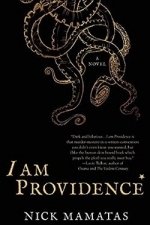
I Am Providence
Book
An author's murder during an H. P. Lovecraft fan convention reveals dark secrets beneath the printed...
Horror crime
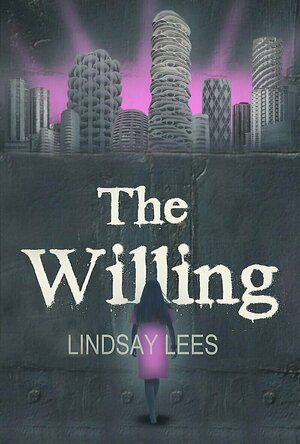
The Willing
Book
In less than a year, fifteen-year-old Gypsy Capone will be considered a woman in Ovoidia, a...
Dystopian

Podbean Podcast App & Player
News and Entertainment
App
Podbean Podcast App is top trending podcast apps of global best 2016 in iTunes Store and also...
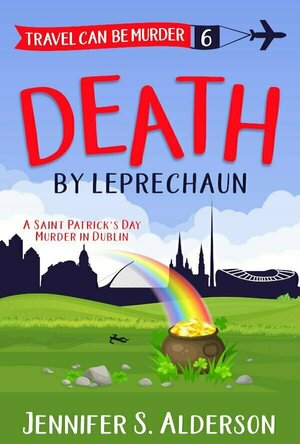
Death by Leprechaun: A Saint Patrick’s Day Murder in Dublin (Travel Can Be Murder Cozy Mystery #6)
Book
When an old friend is arrested in Dublin, tour guide Lana Hansen will need the luck of the Irish to...
Cozy Mystery Travel Cozy


